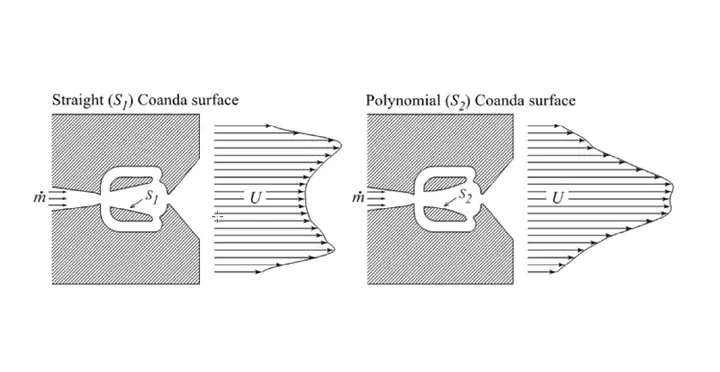Sensitivity of a fluidic oscillator to modifications of feedback channel and mixing chamber geometry

Abstract
This experimental study investigates the effects of internal geometry modifications on the performance of a curved Sweeping Jet actuator. The modifications are applied to the feedback channel’s geometry, the mixing chamber Coanda surface, and the resulting actuator properties are evaluated using time-resolved static pressure measurements inside the actuator and hot-wire measurements of the external flow. The significant result is that slight, localized modifications of the curved sweeping jet actuator geometry can lead to a complete change in the external flow regime, making the jet velocity distribution homogeneous, similar to the angled variant of the actuator. The Coanda surface shape is identified as the primary cause of the external jet adopting the bifurcated or homogeneous flow regime. The relationships between the sweeping frequency, jet deflection angle, required supply pressure, and pressure fluctuations are analyzed and discussed. External flow behavior and coherence are characterized by phase-averaged, phase-locked velocity profiles and auto-correlation of the velocity signals.